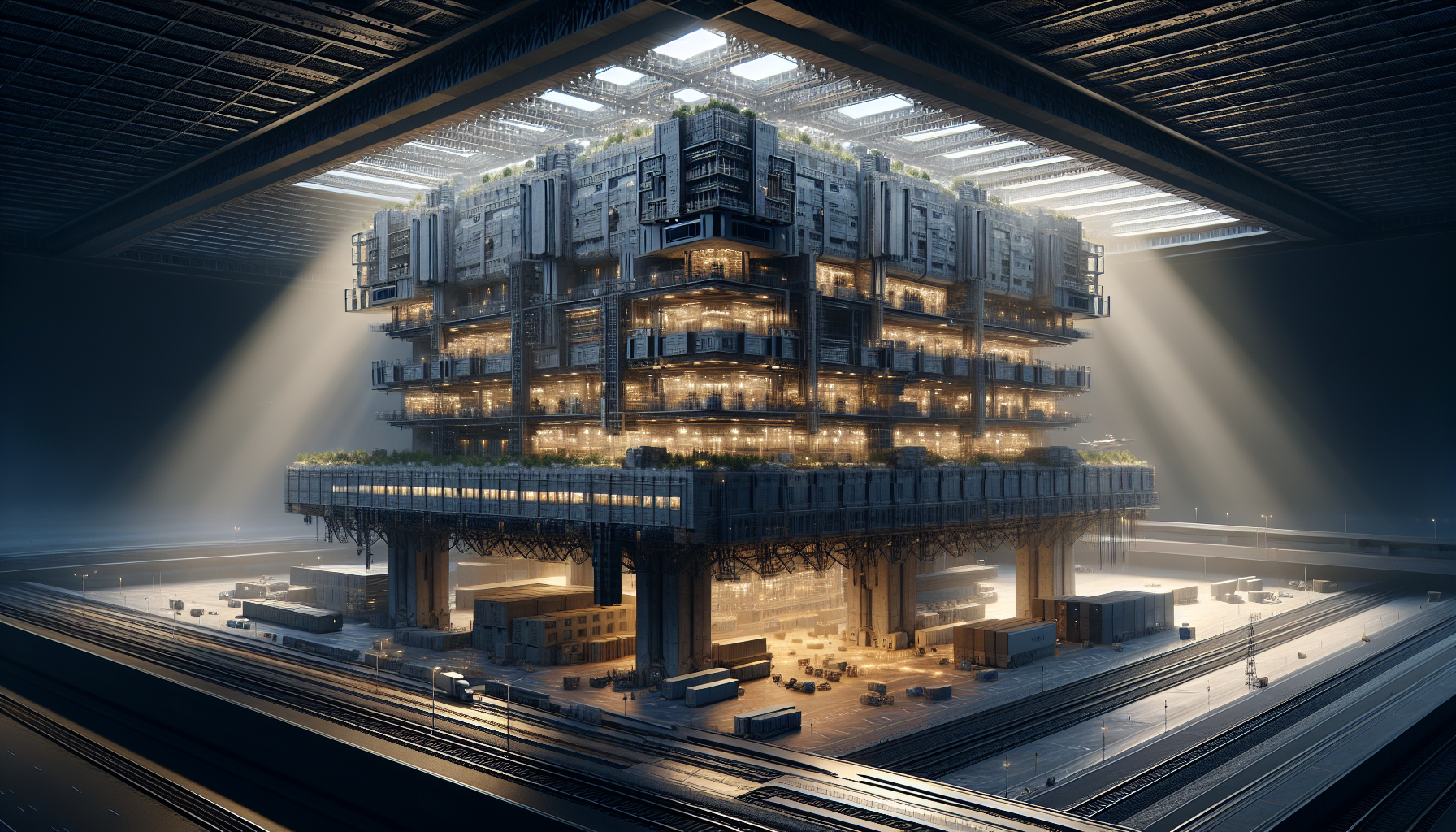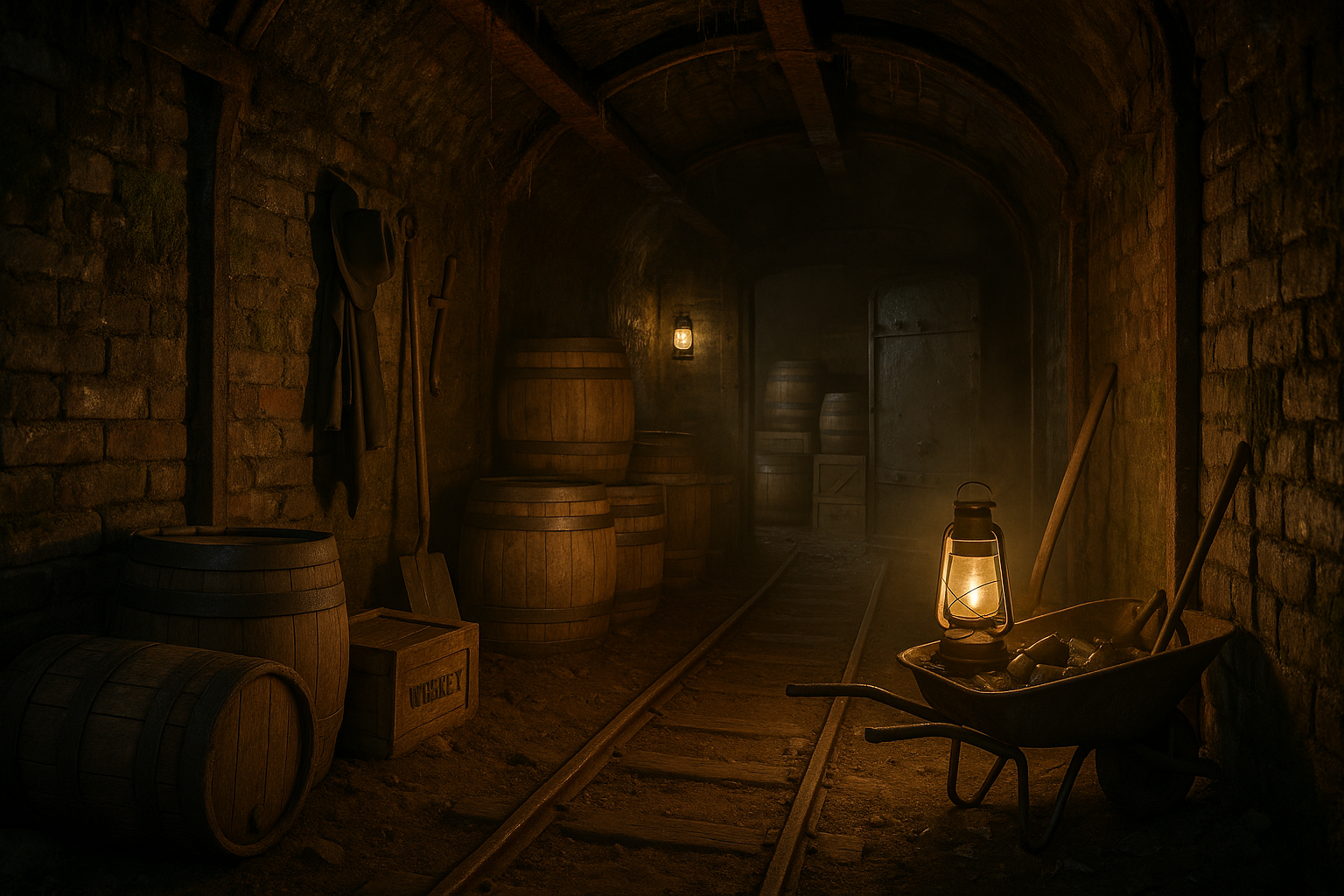In an era where the specter of conflict looms large over global interactions, the quest for peace has taken on new dimensions, often merging with innovation in unexpected ways. One such intersection is the realm of architecture—specifically, structures designed to withstand the forces of modern warfare. The concept of anti-bomb architecture might seem like a distant reality or a relic of Cold War paranoia, but its relevance today is more pressing than ever. As we navigate an increasingly volatile geopolitical landscape, the ingenuity behind these fortified designs holds the promise of not only safeguarding lives but also fostering environments where peace can thrive amid uncertainty. 🏗️
Imagine a cityscape where every building is not just a testament to human creativity and functionality, but also a bastion of resilience. In these environments, schools, hospitals, and homes are designed to endure the unthinkable, standing as silent sentinels against the threat of destruction. The architecture of defense is no longer confined to military installations or government bunkers; it has permeated civilian life, offering a shield in areas where tensions might escalate without warning. This seamless integration of protective design into everyday structures is a testament to the adaptive spirit of modern architecture—a field that continuously evolves to meet the challenges of its time. 🏢
Throughout this exploration of anti-bomb architecture, we will delve into its historical roots, tracing its evolution from rudimentary shelters to sophisticated designs that blend seamlessly with urban landscapes. We’ll examine how advancements in materials and technology have paved the way for buildings that can absorb shockwaves, resist blasts, and minimize casualties. From the strategic use of reinforced concrete and innovative structural layouts to the implementation of cutting-edge materials like blast-resistant glass and energy-dissipating components, these architectural marvels stand at the forefront of modern design. Moreover, we’ll explore the societal implications of living and working in spaces that prioritize safety, and how this affects the psychology of those who inhabit them.
Ultimately, the story of anti-bomb architecture is not just about creating impenetrable structures; it’s about cultivating a mindset that values preparation and resilience. As we journey through the complexities of designing for peace in a world predisposed to conflict, we will uncover the ways in which these architectural strategies can serve as catalysts for broader discussions on security, urban planning, and international cooperation. By the end of this exploration, you will see how the fusion of architecture and defense not only protects but also inspires, challenging us to envision a future where the line between sanctuary and stronghold becomes beautifully blurred. 🌍
The Evolution of Anti-Bomb Architecture
The field of architecture has always been a reflection of the challenges and innovations of its time. As society evolves, so do the threats it faces, and with modern warfare posing new and devastating dangers, the architectural world has had to adapt and innovate to ensure safety and resilience. Anti-bomb architecture, in particular, has become a crucial component in fortifying peace in times of conflict. From reinforced structures to innovative design principles, this form of architecture aims to minimize damage and protect lives in the face of explosive threats.
Historically, architecture has played a role in defense and protection, with ancient civilizations building fortresses and castles designed to withstand attacks. However, the evolution into specialized anti-bomb architecture really gained momentum during the 20th century, particularly with the advent of aerial bombing in World War I and II. These conflicts highlighted the need for buildings that could withstand significant explosive forces, leading to developments in materials and design strategies focused on resistance and resilience.
Today, anti-bomb architecture is a sophisticated field that incorporates a range of strategies, from the use of blast-resistant materials to strategic design choices that deflect or absorb shock waves. Engineers and architects work closely to create structures that can not only withstand explosions but also mitigate their impact, ensuring the safety of occupants and reducing potential damage to vital infrastructure. The integration of technology and architectural innovation continues to advance, offering new ways to protect people and property from the destructive forces of modern warfare.
Key Features of Anti-Bomb Architecture
To understand the power of anti-bomb architecture in modern warfare, it’s essential to explore its key features and how they contribute to building resilience. These features are designed to address various aspects of explosive threats, ensuring comprehensive protection.
One of the primary elements of anti-bomb architecture is the use of blast-resistant materials. These materials are specially engineered to withstand high pressures and impacts, making them ideal for use in structures that may be targeted by explosives. Common materials include reinforced concrete, steel, and specialized composites that offer enhanced strength and durability. By incorporating these materials into the design of buildings, architects can significantly reduce the risk of structural failure during an explosion.
Another critical aspect of anti-bomb architecture is the design and layout of buildings. Strategic placement of walls, windows, and entry points can help direct blast waves away from occupied areas, minimizing harm to inhabitants. For example, the use of blast walls and barriers can deflect shock waves, while open spaces and controlled entry points can dissipate energy. Additionally, the inclusion of escape routes and emergency systems ensures that occupants can evacuate safely in the event of an explosion.
Technological Advancements in Anti-Bomb Architecture
Technological advancements play a significant role in the evolution of anti-bomb architecture, providing new tools and techniques for enhancing building resilience. One such advancement is the development of predictive modeling and simulation software, which allows architects and engineers to test various design scenarios and assess their effectiveness against explosive forces. By simulating different blast conditions, designers can optimize building structures to maximize protection and safety.
In addition to predictive modeling, sensor technology has become an integral part of anti-bomb architecture. Sensors can detect and monitor changes in pressure, temperature, and structural integrity, providing real-time data that can be used to assess the impact of an explosion and guide emergency response efforts. This data-driven approach enhances situational awareness and enables more effective decision-making in crisis situations.
For a deeper understanding of these innovations, watch the video below titled “The Future of Anti-Bomb Buildings” by ArchiTech on YouTube.
Watch the video here
Comparative Analysis: Traditional vs. Modern Anti-Bomb Architecture
To appreciate the advancements in anti-bomb architecture, it’s helpful to compare traditional methods with modern approaches. This comparison highlights how far the field has come in terms of materials, design, and technological integration.
| Aspect | Traditional Anti-Bomb Architecture | Modern Anti-Bomb Architecture |
|---|---|---|
| Materials | Basic concrete and steel | Reinforced concrete, steel, and composites |
| Design | Simple structural reinforcements | Strategic layout, blast walls, and barriers |
| Technology | Limited use of technology | Predictive modeling, sensors, and real-time data |
As you can see, modern anti-bomb architecture incorporates a multi-faceted approach that combines advanced materials, strategic design, and cutting-edge technology to provide superior protection against explosive threats.
Implementing Anti-Bomb Architecture in Urban Environments
Incorporating anti-bomb architecture in urban environments presents unique challenges and opportunities. Urban areas, with their dense populations and critical infrastructure, require comprehensive strategies to protect against the threat of explosions while maintaining functionality and aesthetic appeal.
One approach to implementing anti-bomb architecture in cities is through the integration of protective features in public buildings and infrastructure. This includes government buildings, transportation hubs, and critical utilities, all of which are potential targets in times of conflict. By prioritizing these structures for anti-bomb enhancements, cities can safeguard essential services and reduce the risk of mass casualties in the event of an attack.
Another important aspect is community engagement and awareness. Educating the public about the importance of anti-bomb architecture and how to respond in an emergency can empower citizens and foster a culture of preparedness. This involves collaboration between architects, urban planners, and local authorities to develop communication strategies and emergency protocols that ensure public safety.
- Enhance public awareness and education about anti-bomb architecture.
- Integrate protective features in key urban infrastructures.
- Collaborate with local authorities for effective emergency protocols.
By taking a holistic approach that combines architectural innovation with community involvement, urban environments can become more resilient in the face of modern warfare threats, ensuring both safety and peace.

Conclusion
In conclusion, the intricate interplay between architecture and warfare, specifically the concept of anti-bomb architecture, underscores a significant evolution in our approach to modern conflicts. Throughout the article, we have explored the historical context of defensive structures, the technological advancements that have transformed them, and the contemporary examples of buildings designed to withstand explosive threats. The main points discussed highlight not only the technical aspects of these structures but also their profound impact on peacekeeping and the protection of civilian life.
Historically, architecture has always been intertwined with defense, from medieval castles with moats to fortified city walls. However, as warfare has evolved, so too have the strategies to mitigate its impacts. The emergence of anti-bomb architecture is a testament to the human spirit’s resilience and ingenuity. By leveraging cutting-edge materials and design principles, modern architects and engineers are able to create spaces that are both functional and fortified, offering safety without compromising aesthetic value.
A pivotal aspect discussed is the role of technology in advancing anti-bomb architecture. Innovations such as blast-resistant materials, energy-absorbing facades, and sophisticated structural designs are crucial in creating buildings that can withstand explosive forces. These technologies not only enhance the durability of structures but also provide a sense of security to those who inhabit them. Furthermore, the integration of these features into urban planning emphasizes a proactive approach to safety, rather than a reactive one.
Contemporary examples of anti-bomb architecture, such as embassies, government buildings, and public infrastructures, showcase the practical application of these concepts. Each example illustrates a commitment to protecting lives while maintaining the functionality and accessibility of these structures. Such designs are not only defensive but also symbolize the resolve to uphold peace and stability in the face of potential threats.
The importance of anti-bomb architecture extends beyond mere physical protection; it represents a broader commitment to safeguarding human life and promoting peace. By investing in structures that can endure the unthinkable, societies are better equipped to handle the uncertainties of modern warfare. This proactive stance also serves as a deterrent to aggression, reinforcing the message that the protection of civilians is a priority.
As we conclude, it is essential to recognize the broader implications of anti-bomb architecture in fostering a culture of peace and resilience. These structures stand as reminders that, even in times of conflict, humanity can devise solutions that prioritize safety and security. They embody a spirit of innovation that transcends the challenges of warfare and contributes to a more peaceful world.
We encourage you, the reader, to reflect on the insights shared in this article and consider the impact of architecture in shaping not only our physical landscapes but also our societal values. Engage with this topic by sharing your thoughts, discussing it with others, or applying these concepts in your professional endeavors. Whether you are an architect, engineer, policy-maker, or concerned citizen, your voice and actions can contribute to advancing the principles of safety and peace.
In a world where the specter of conflict looms large, the power of anti-bomb architecture offers hope and inspiration. It challenges us to think creatively about solutions that protect and preserve life, even in the face of adversity. Let us strive to build a future where the principles of peace and resilience are as enduring as the structures we create.
🔗 For further reading and exploration on this topic, consider visiting resources like ArchDaily, ScienceDirect, and ResearchGate. These platforms provide valuable insights and ongoing research into the fields of architecture, engineering, and conflict resolution.
By engaging with these resources and contributing to the conversation, we can collectively work towards a world where architecture serves as a cornerstone for peace and security. Together, let us fortify not just our buildings, but our commitment to a safer, more harmonious world. 🌍
Toni Santos is a visual storyteller and artisan whose work explores the quiet power of what lies beneath. With a deep fascination for subterranean and hidden architecture, Toni uncovers the layers, voids, and forgotten spaces that shape our built environment from the shadows.
His art is a journey through the unseen — from ancient underground chambers to sealed passageways, service tunnels, and foundations buried in time. Each creation tells a story of silence, secrecy, and structure — revealing how absence and concealment can be just as meaningful as what’s visible above ground.
Whether working through visual compositions, architectural studies, or symbolic handcrafted pieces, Toni captures the soul of hidden spaces. His work bridges art and archaeology, blending design with discovery. Trained in visual design and traditional techniques, Toni creates with intention. His pieces don’t just depict — they interpret, inviting viewers to rethink what space, memory, and architecture mean when they’re hidden from view.
As the creative force behind Vizevex, Toni shares this perspective through curated visual narratives, symbolic collections, and interpretive essays that give voice to the quiet geometries beneath our feet.
His work is a tribute to:
The mystery of spaces built to be forgotten
The symbolism embedded in foundations, voids, and passageways
The timeless connection between human intention and hidden structure
Whether you’re an artist, an urban explorer, or someone fascinated by the unseen frameworks that support our world, Toni invites you into a realm where architecture becomes myth — one corridor, one layer, one buried story at a time.





